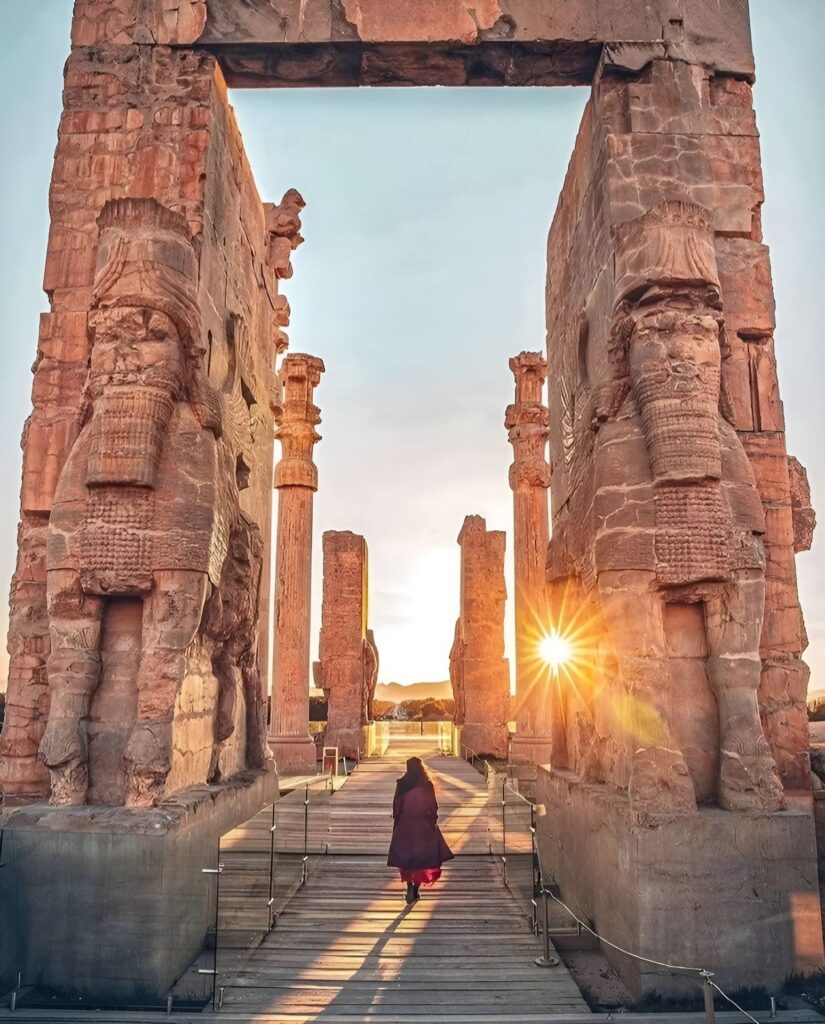Introduction
Nestled in the heart of modern-day Iran lies an ancient wonder that has captivated the imaginations of historians, archaeologists, and travelers alike – the ruins of Persepolis. This once-mighty capital of the Achaemenid Empire, founded by the legendary King Darius I in 518 B.C., stands as a testament to the remarkable achievements of one of the greatest civilizations in human history.
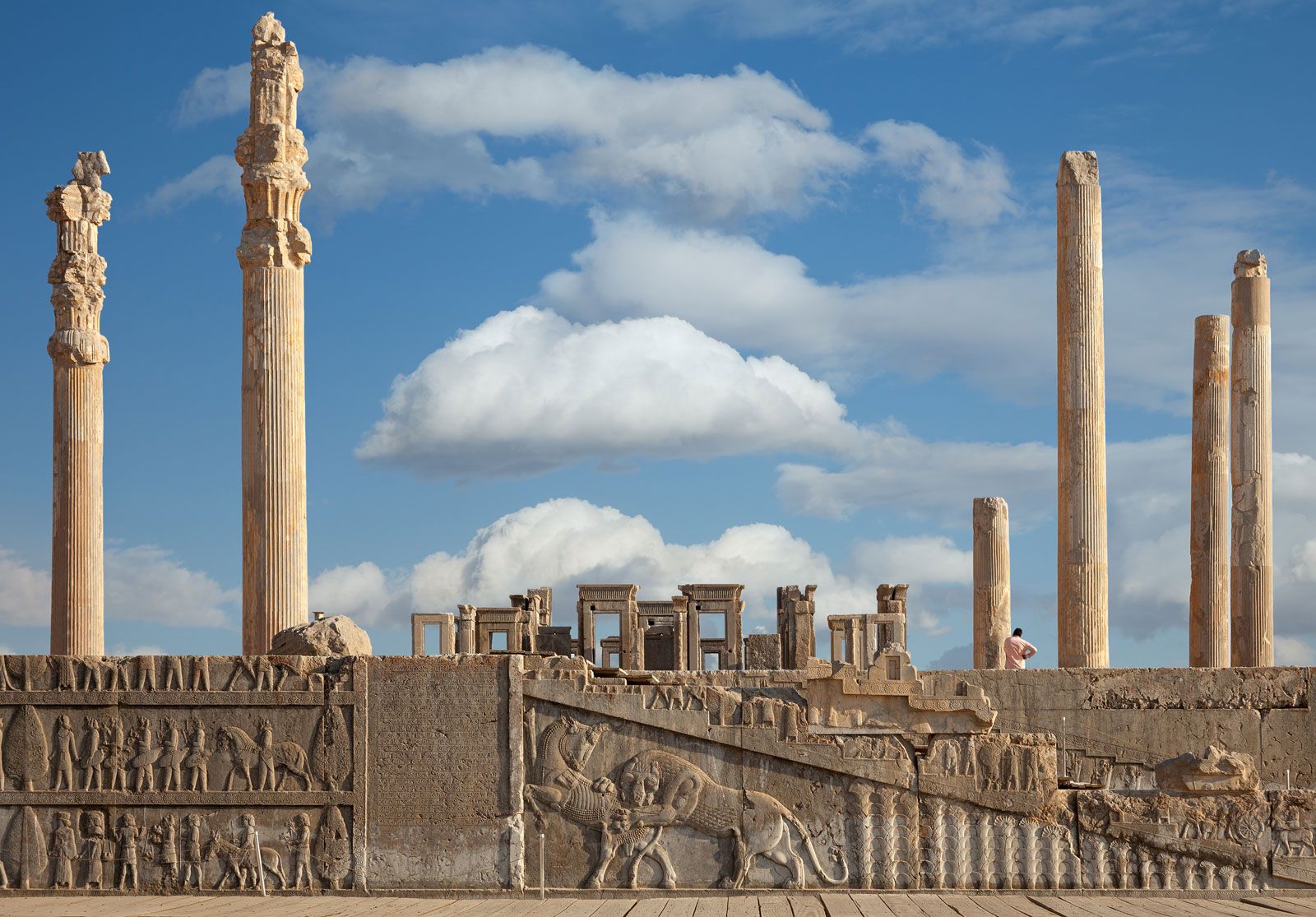
Persepolis was not merely a city, but a grand, opulent complex that served as the seat of power for the Achaemenid kings. Built upon an immense, half-artificial, half-natural terrace, the palace complex was a stunning blend of Mesopotamian and Persian architectural styles, creating a visual feast for the senses. The sheer scale and grandeur of the ruins make Persepolis a truly unique archaeological site, offering a glimpse into the splendor and might of the Achaemenid Empire.

In this comprehensive blog post, we will delve into the fascinating history, architecture, and cultural significance of Persepolis, exploring why this ancient site continues to captivate and inspire people from around the world.
The Rise of the Achaemenid Empire
The Achaemenid Empire, founded by Cyrus the Great in the 6th century B.C., was one of the largest and most powerful empires of the ancient world. Stretching from the Mediterranean Sea to the Indus River, the empire encompassed a diverse array of cultures, languages, and customs, united under the rule of the Achaemenid kings.
The empire reached the height of its power and prosperity during the reign of Darius I, who ascended the throne in 522 B.C. Darius, known as “Darius the Great,” was a skilled military strategist and administrator who expanded the empire’s borders and consolidated his power through a system of satraps, or provincial governors.
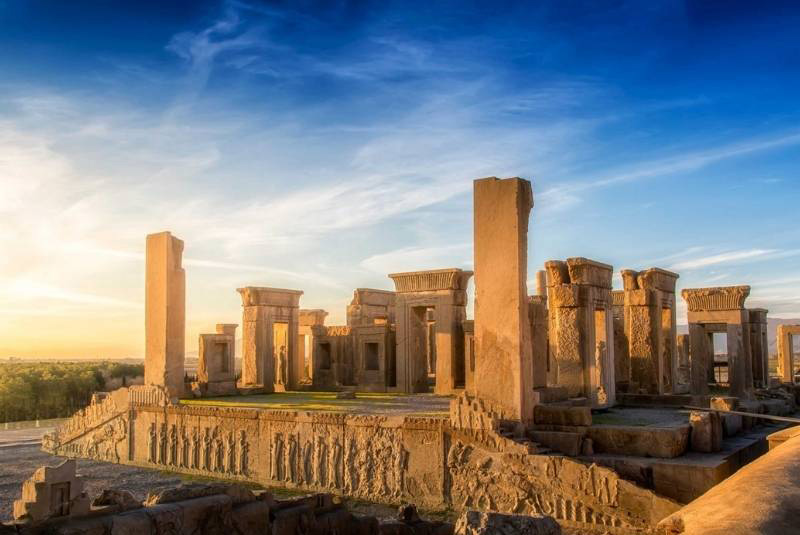
It was under Darius’ leadership that the decision was made to establish a new capital city, one that would serve as the administrative and ceremonial heart of the Achaemenid Empire. The location chosen for this grand project was a site known as Parsua, situated in the heart of the Persian heartland, near the modern-day city of Shiraz.
The Construction of Persepolis
The construction of Persepolis, the new capital city, was an ambitious undertaking that spanned several decades. Darius I, along with his successors, Xerxes I and Artaxerxes I, oversaw the planning and construction of the vast palace complex, which was built on an immense, half-artificial, half-natural terrace that rose high above the surrounding landscape.
The site was strategically chosen for its natural defensive advantages, as well as its proximity to important trade routes and the Achaemenid imperial capital of Pasargadae. The construction of Persepolis was a colossal feat of engineering, requiring the labor of thousands of skilled workers, artisans, and architects.
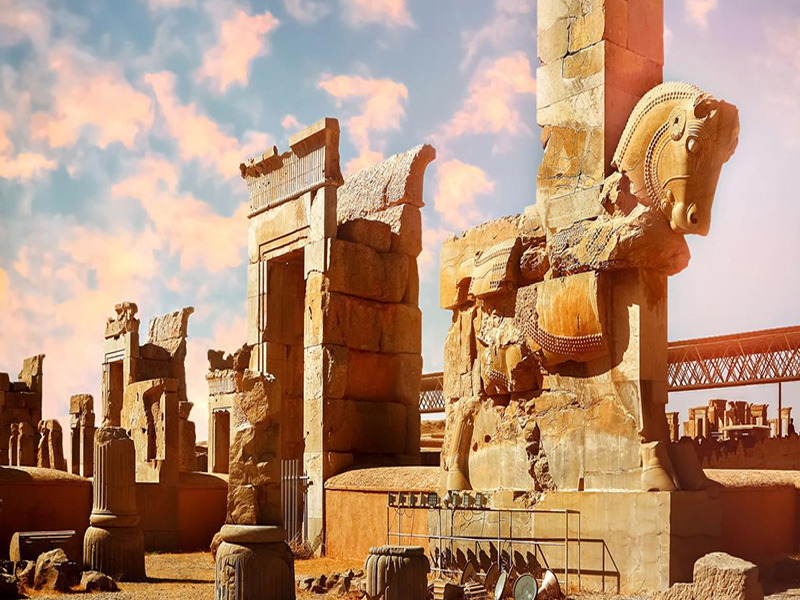
The palace complex was designed to be a grand, imposing statement of the Achaemenid Empire’s power and wealth. Inspired by Mesopotamian architectural models, the buildings of Persepolis were adorned with intricate carvings, elaborate reliefs, and towering columns that created a sense of awe and reverence in all who laid eyes upon them.
At the heart of the complex stood the Apadana, a massive audience hall that could accommodate thousands of people. This grand structure was flanked by the Throne Hall, the Tachara Palace, and numerous other buildings, all of which were connected by a network of roads, stairs, and ceremonial gateways.
The attention to detail and craftsmanship displayed in the construction of Persepolis is truly remarkable. The buildings were adorned with intricate carvings and reliefs that depicted scenes of the Achaemenid kings receiving tribute from their subjects, as well as images of mythological creatures and symbols of the empire’s power and prosperity.
The Grandeur and Significance of Persepolis
Persepolis was not just a city, but a grand, opulent complex that served as the ceremonial and administrative heart of the Achaemenid Empire. The site was a testament to the wealth, power, and cultural sophistication of the Achaemenid rulers, who sought to create a capital that would rival the grandeur of ancient Mesopotamian cities like Babylon and Nineveh.
The sheer scale and complexity of the Persepolis complex is truly awe-inspiring. The Apadana, the grand audience hall, was a massive structure that could accommodate thousands of people, with towering columns and intricate carvings that depicted the empire’s vast reach and the diversity of its subjects.
The Throne Hall, where the Achaemenid kings would have held court and received visiting dignitaries, was another impressive structure, featuring a grand staircase adorned with carved reliefs that depicted the power and might of the empire.
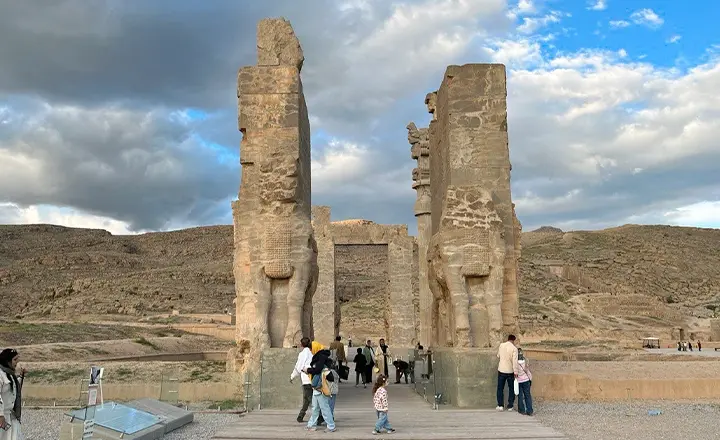
Throughout the complex, the attention to detail and craftsmanship is truly remarkable. The walls and columns of the buildings were adorned with intricate carvings and reliefs that depicted scenes of the Achaemenid kings receiving tribute from their subjects, as well as images of mythological creatures and symbols of the empire’s power and prosperity.
The cultural significance of Persepolis cannot be overstated. As the capital of the Achaemenid Empire, the site served as a hub of political, economic, and cultural activity, attracting visitors and envoys from across the vast expanse of the empire. The site was also a center of religious and ceremonial importance, with the Achaemenid kings using Persepolis as a venue for the annual Nowruz celebration, a festival that marked the beginning of the new year.
The Decline and Destruction of Persepolis
Despite the grandeur and significance of Persepolis, the capital of the Achaemenid Empire did not enjoy a lasting legacy. In 330 B.C., the city was sacked and burned to the ground by the armies of Alexander the Great, marking the end of the Achaemenid Empire and the beginning of a new era of Macedonian rule in the region.
The reasons for the destruction of Persepolis are a matter of historical debate, with some scholars suggesting that the attack was a deliberate act of retribution for the Persian sack of Athens during the Greco-Persian Wars, while others argue that the city was simply a casualty of Alexander’s broader campaign to consolidate his power in the region.

Regardless of the motivations, the destruction of Persepolis was a devastating blow to the Achaemenid Empire, robbing the once-mighty civilization of its cultural and political heart. In the aftermath of the attack, the city was abandoned and left to the ravages of time, with the grand palace complex gradually falling into ruin.
The Rediscovery and Preservation of Persepolis
For centuries, the ruins of Persepolis lay forgotten, hidden beneath the sands of time and the encroaching desert. It was not until the 17th century that European travelers and scholars began to rediscover the site, sparking a renewed interest in the Achaemenid Empire and its lost capital.
In the early 20th century, the site was subjected to a series of excavations and archaeological surveys, led by pioneering scholars such as Ernst Herzfeld and Friedrich Sarre. These efforts helped to uncover the true scale and significance of the Persepolis complex, revealing the intricate carvings, reliefs, and architectural features that had been buried for centuries.
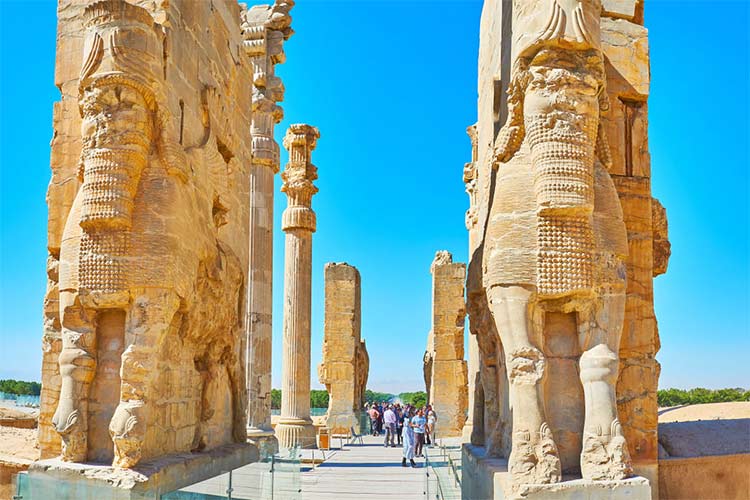
Today, the ruins of Persepolis are recognized as a UNESCO World Heritage Site, a testament to the site’s cultural and historical importance. The site is a popular destination for tourists and scholars alike, who come to marvel at the grandeur of the Achaemenid Empire and to explore the rich history and heritage of this ancient civilization.
Preserving the ruins of Persepolis is an ongoing challenge, as the site faces threats from environmental factors, such as erosion and weathering, as well as the potential for damage from human activity, such as tourism and development. However, the Iranian government and international organizations have worked tirelessly to protect and maintain the site, ensuring that the legacy of the Achaemenid Empire will continue to be celebrated and studied for generations to come.
Conclusion
The ruins of Persepolis stand as a testament to the power, wealth, and cultural sophistication of the Achaemenid Empire, one of the greatest civilizations of the ancient world. From its grand, opulent palace complex to its intricate carvings and reliefs, Persepolis offers a glimpse into the glory and splendor of this lost empire, captivating visitors and scholars alike.
Despite the site’s tragic destruction at the hands of Alexander the Great, the ruins of Persepolis have endured, and continue to captivate and inspire people from around the world. As we explore the grandeur of this ancient capital, we are reminded of the enduring power of human achievement and the timeless allure of the past.
Whether you are a history buff, an archaeology enthusiast, or simply someone who appreciates the beauty and wonder of the ancient world, a visit to the ruins of Persepolis is sure to leave a lasting impression. So, embark on a journey to this remarkable site and discover the captivating story of the Achaemenid Empire, a civilization that left an indelible mark on the course of human history.
